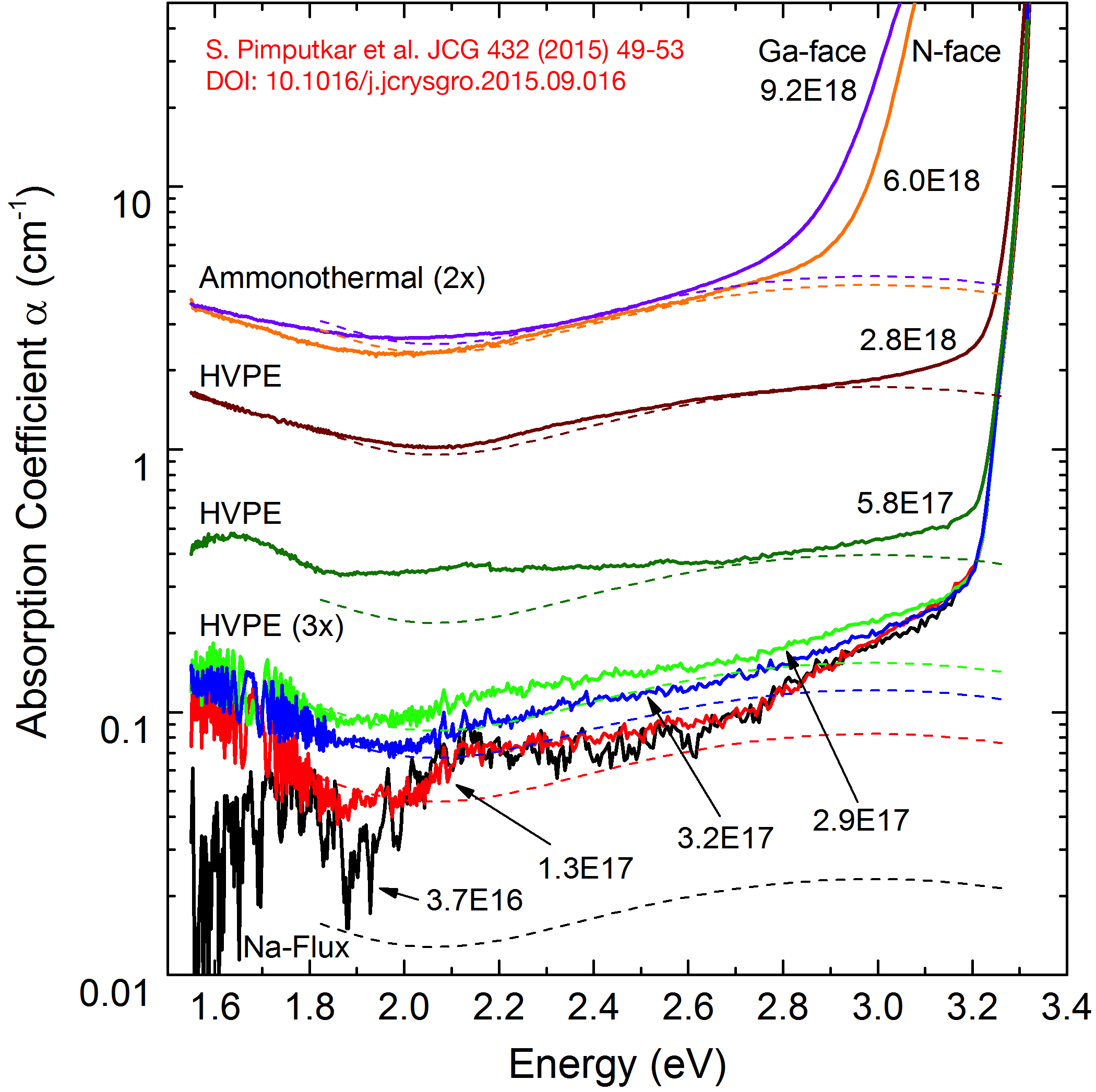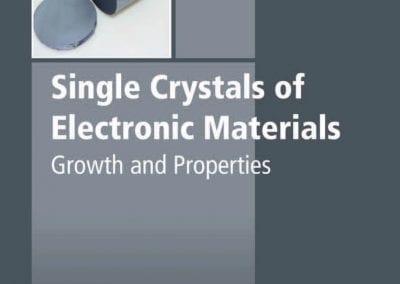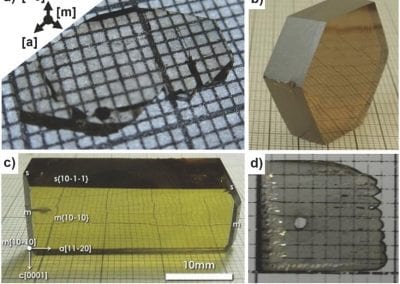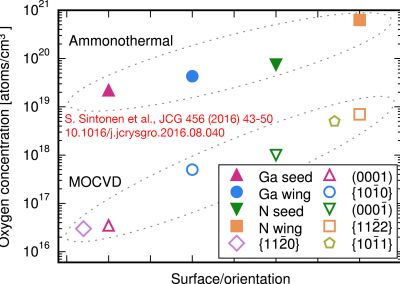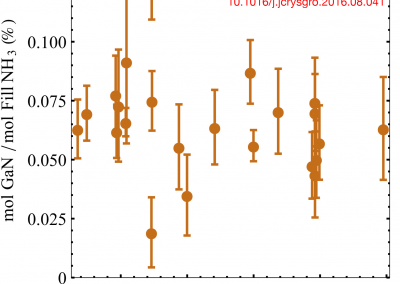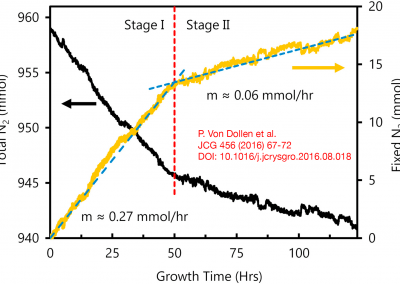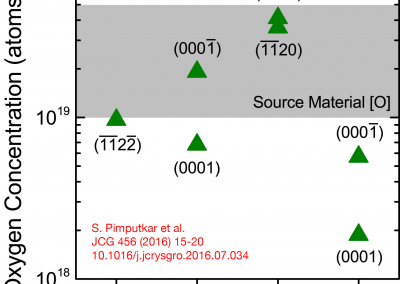Free electron concentration dependent sub-bandgap optical absorption characterization of bulk GaN crystals
Journal of Crystal Growth, 432 (2015) 49-53
DOI: 10.1016/j.jcrysgro.2015.09.016
Funding: NSF-GFRP (DGE-0707460), DHS-GSFP (DE-AC05-06OR2310), SSLEEC, MRL (DMR 1121053)
Optical transmission measurements were performed on high-quality bulk gallium nitride (GaN) crystals grown by sodium flux, hydride vapor phase epitaxy, and the ammonothermal method with varying free electron concentrations ranging from 4×1016 cm-3 to 9×1018 cm-3. The quality of the crystals was analyzed by X-ray diffraction, threading dislocation density determination, impurity concentrations, and Hall mobility measurements. The sub-bandgap absorption coefficient and index of refraction were determined based on illumination wavelengths ranging from 360 nm to 800 nm. Phonon-assisted free carrier absorption was determined to be the dominant absorption mechanism above approximately 0.1 cm-1. The absorption coefficient at 450 nm varied linearly from 0.1 cm-1 to 5 cm-1 for free electron concentrations ranging from 1×1017 cm-3 to 9×1018 cm-3. The ammonothermal GaN samples exhibited a strong defect related onset of absorption above 2.9 eV which can be explained by the presence of appreciable hydrogenated gallium vacancies having defect states close to the valance band within the electric bandgap of GaN. The presence of hydrogenated gallium vacancies was experimentally confirmed by Fourier transform infrared absorbance measurements and double hydrogenated gallium vacancy defects are speculated to be prominent in ammonothermal GaN. (Read full text)






